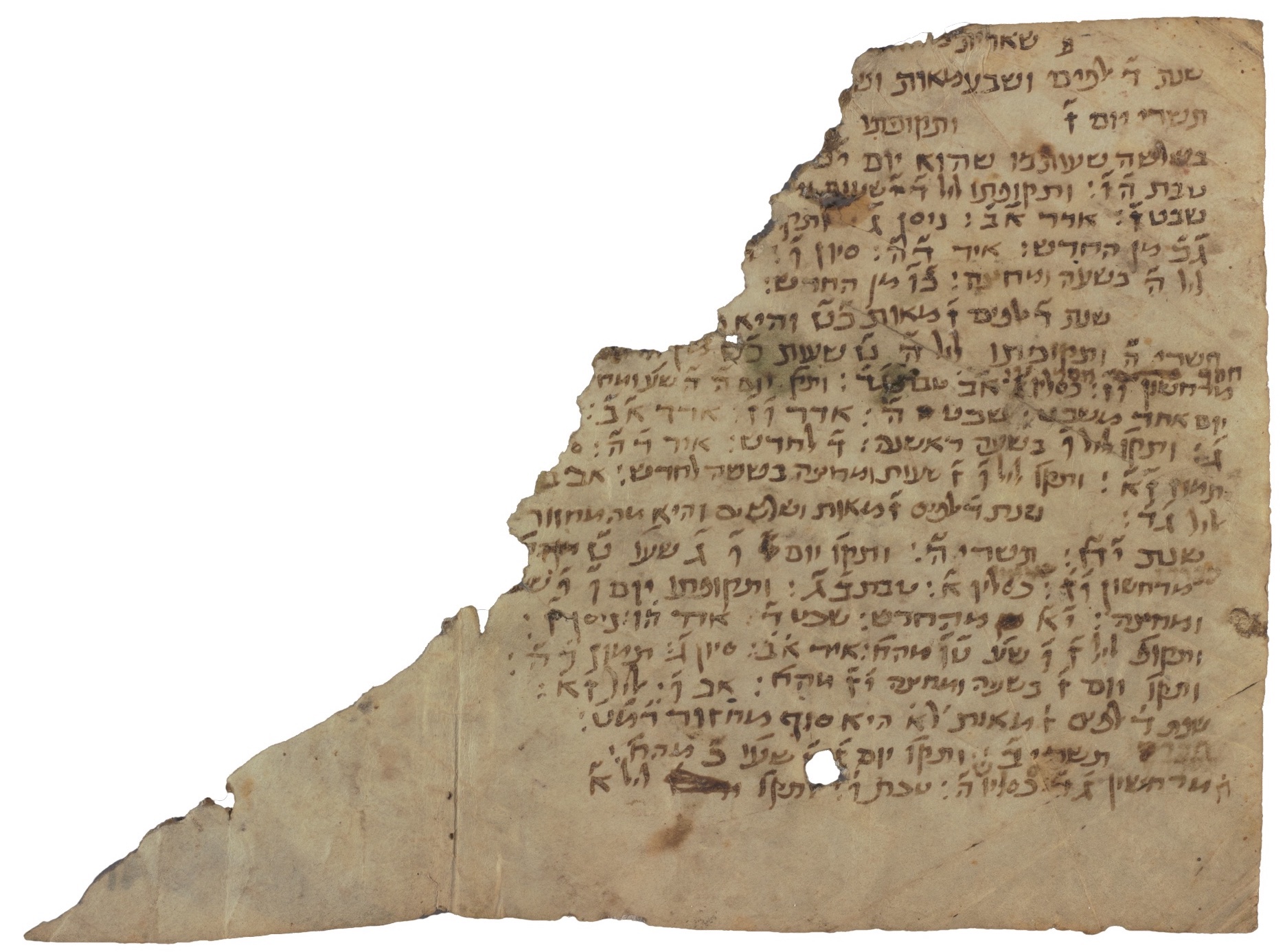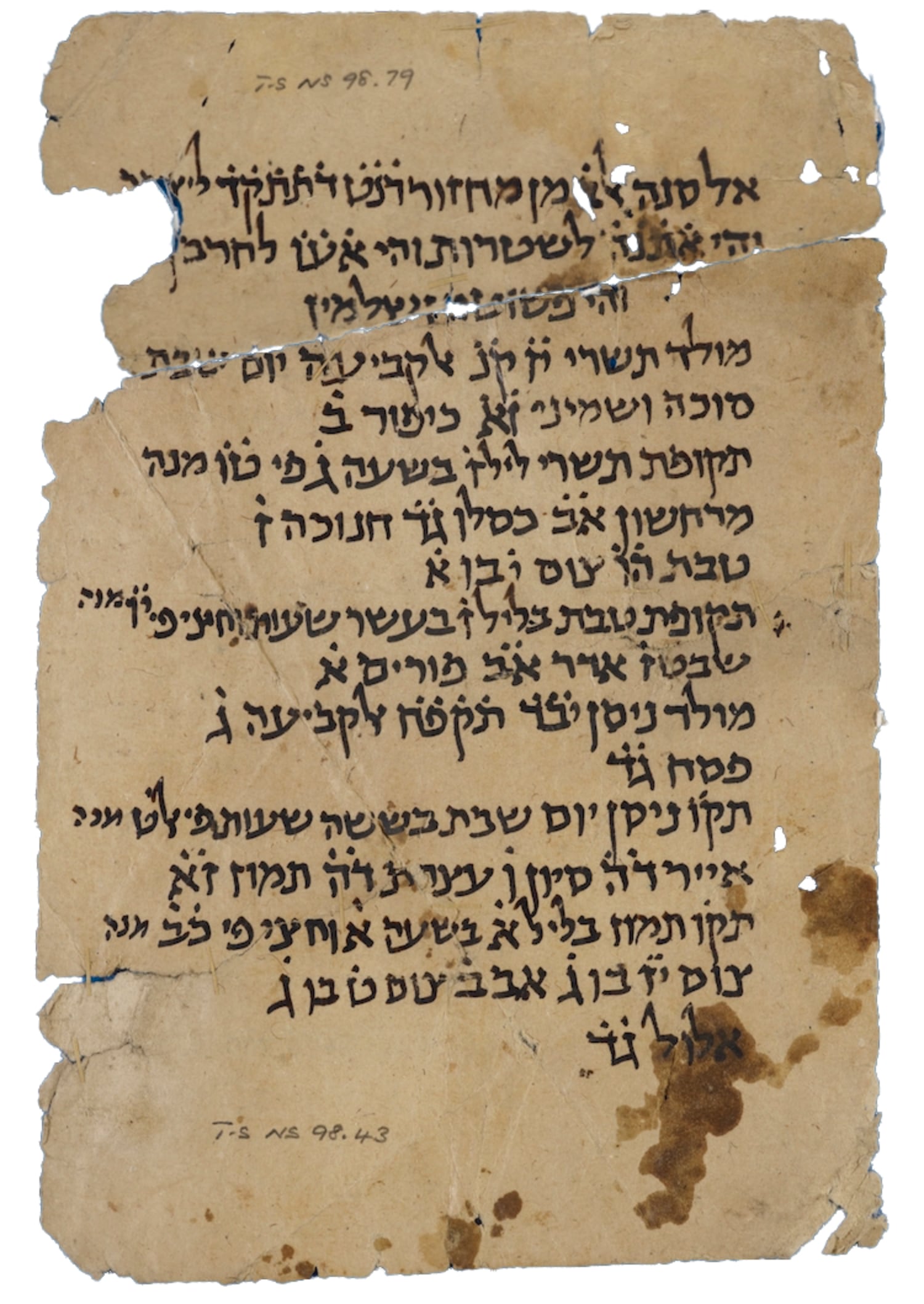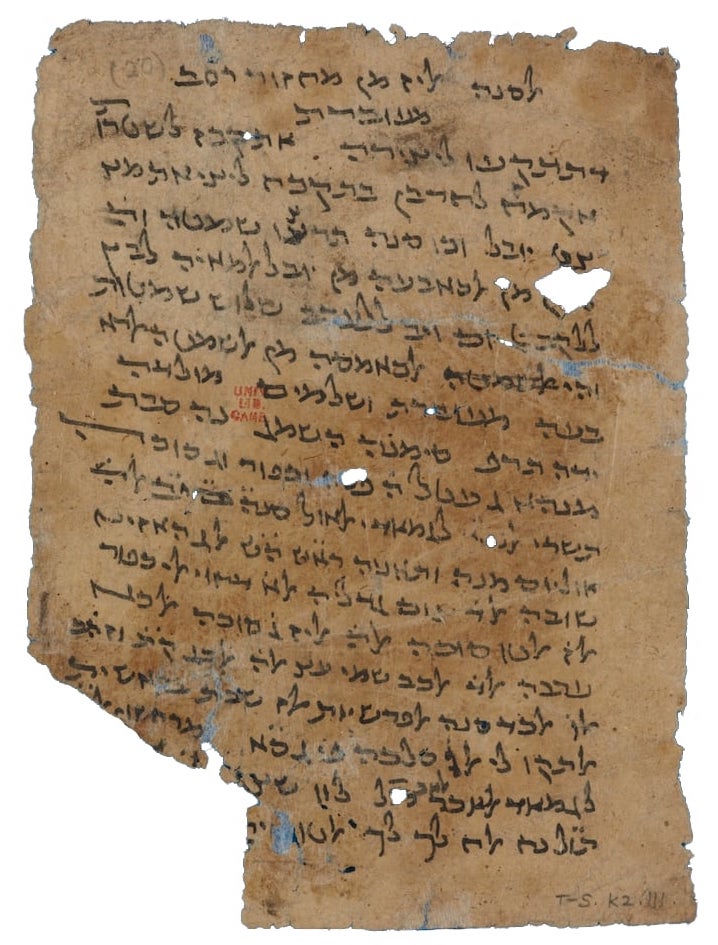Online resource: Calendar Fragments as a Tool for Palaeography

A timeline of medieval calendar booklets from the Taylor-Schechter Genizah collection is now available on the website of the Genizah Research Unit, put together by Nadia Vidro. It is hoped that this timeline will serve as a tool for palaeographic analysis of manuscripts in the collection.

Composite image of T-S NS 98.43r and T-S NS 98.79r, a calendar for the year 1143/4 CE.

T-S K2.111v, a calendar for the year 1215/6 CE, in the hand of Yedutun ha-Levi.
Dated manuscripts are essential for studying the chronological developments of handwriting. Unfortunately, only a tiny fraction of the tens of thousands of fragments carry a date, and further datable sources are always sought in order to improve the efficacy of palaeographic analysis. While calendar fragments are rarely explicitly dated, some types of calendars can be assigned to a relatively short period of time. The new timeline is populated with such securely datable calendar fragments, allowing us to use their script for palaeographic comparison.
You can read more about the project, corpus and methodology for dating calendar booklets here.
The project was funded by the British Academy.

Add new comment